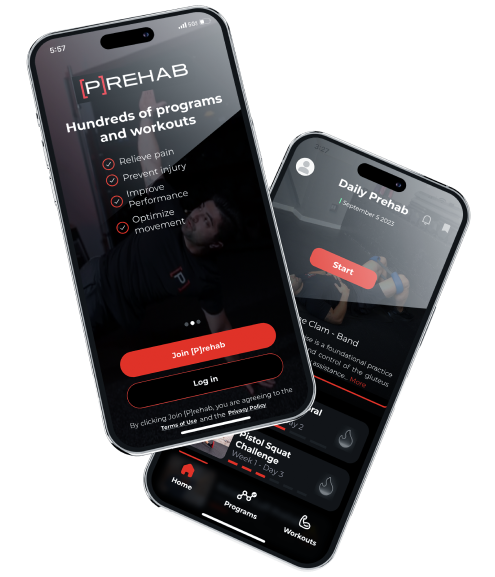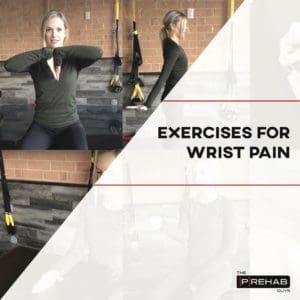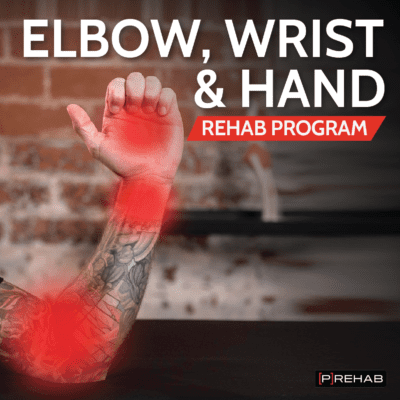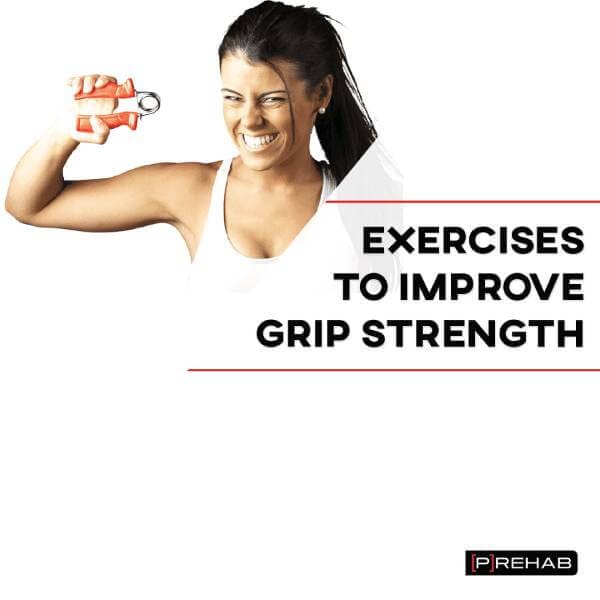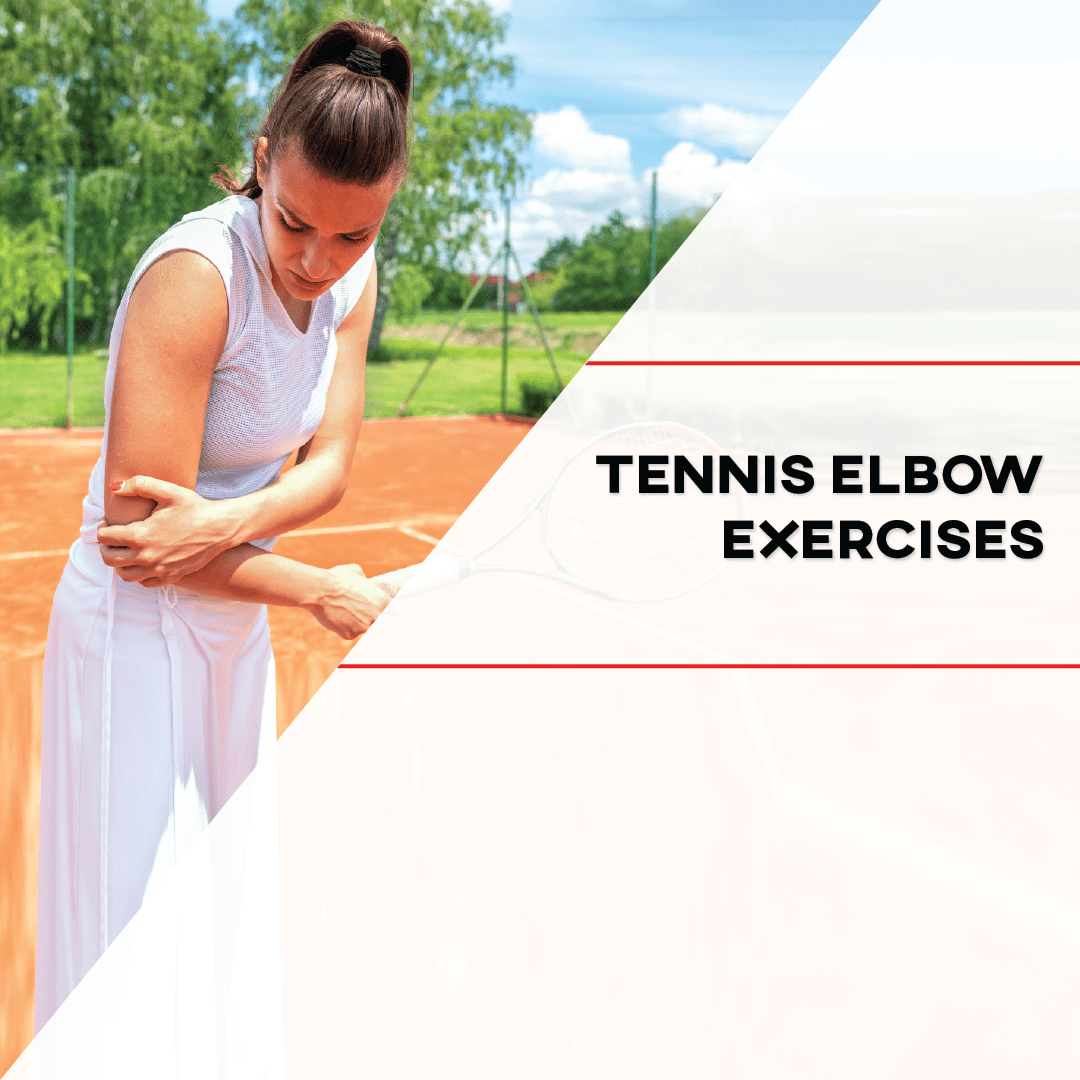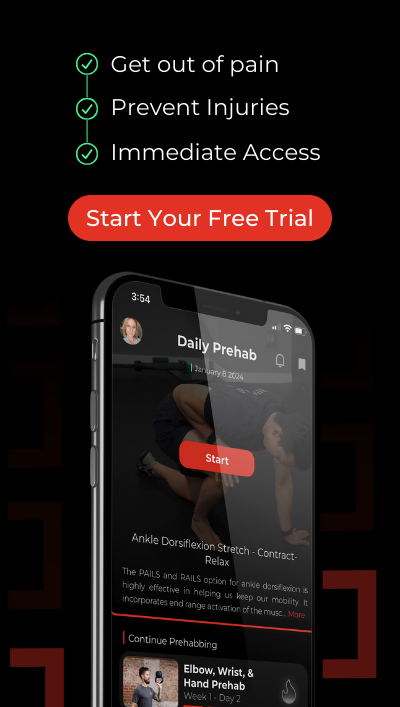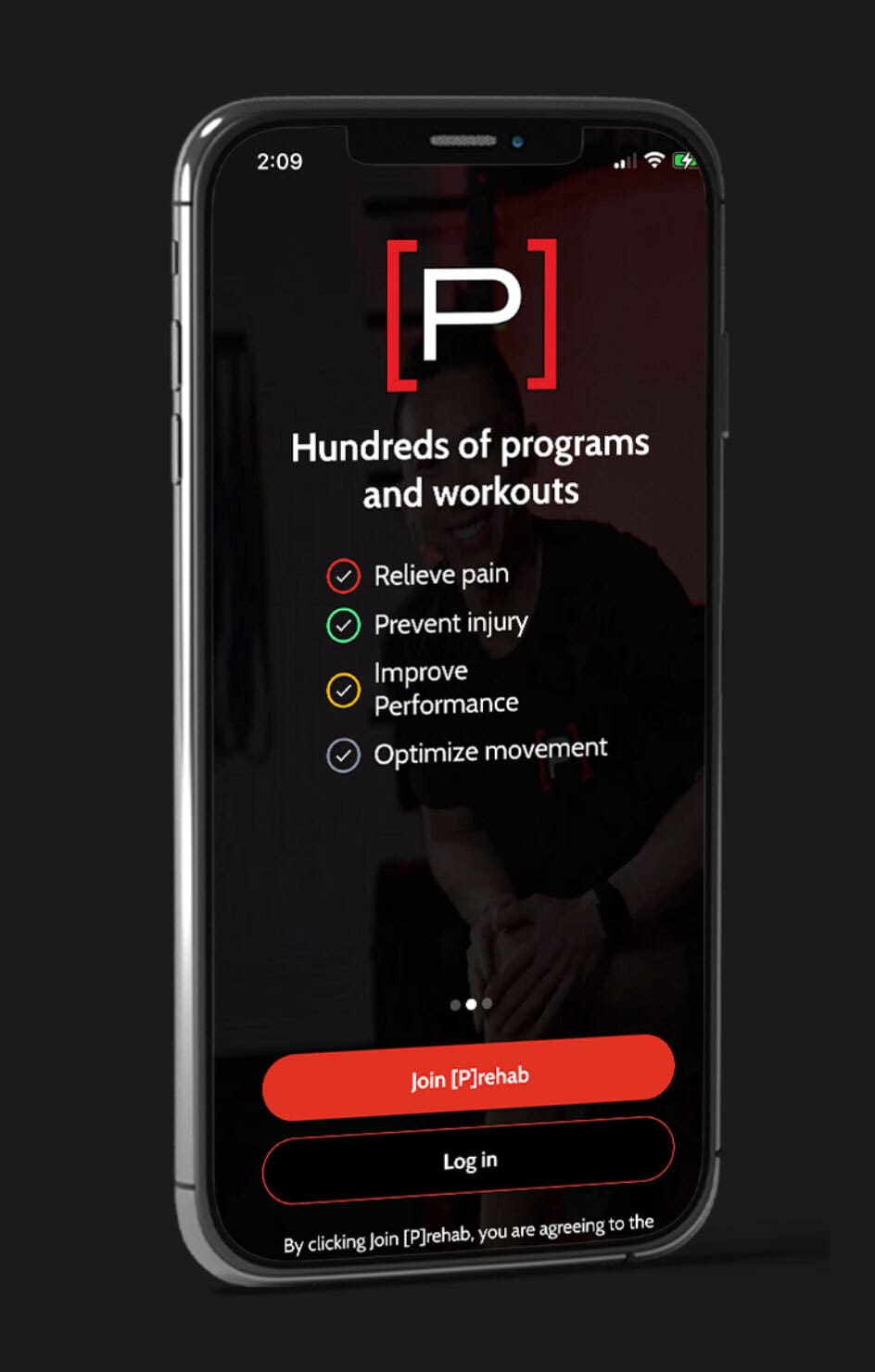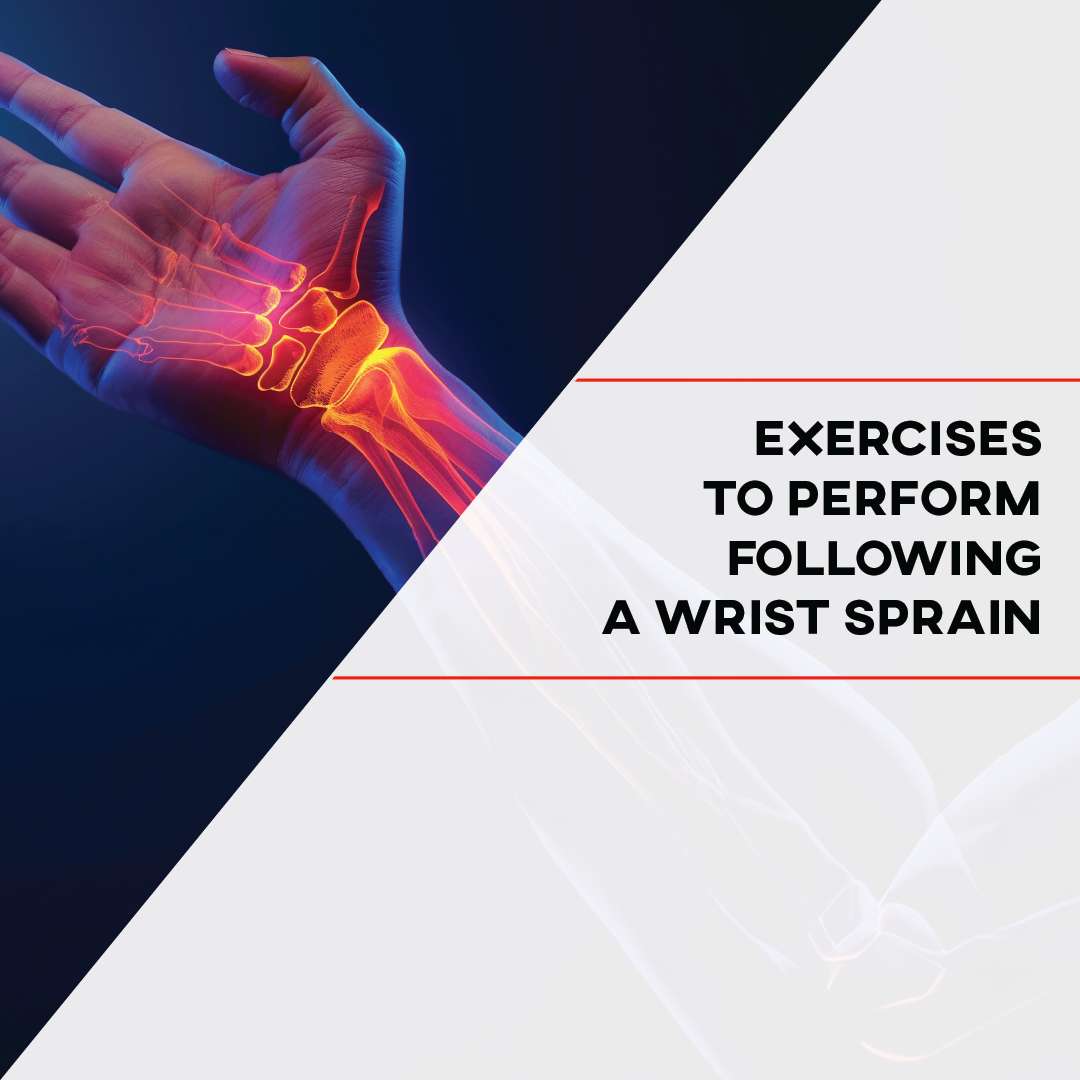
The wrist – a small but very important joint in our body that allows us to do many of our favorite activities! You can thank your wrist when you hold a tennis racket, turn a doorknob, type on your keyboard, and wave hello to your friend. Sprains in the wrist are a very common injury – it is estimated that around 2.6 million wrist and hand injuries are diagnosed every year, with a significant portion of those being wrist sprains.
A wrist sprain can sideline you from your favorite activities and be a nagging injury. However, with the timely and effective treatment, a wrist sprain doesn’t need to hold you down for long! In this article, we will discuss basic anatomy of the wrist, mechanisms of wrist injury and how to prevent them, and exercises to perform following a wrist sprain to help you rehab and recover from this injury!
Wrist Anatomy and Function
The wrist is a complex joint that plays a crucial role in hand and upper extremity function. The wrist is considered a biaxial, ellipsoid-type, synovial joint – in simple terms, that means that the wrist is responsible for several important movements that allow us to perform everyday activities, as well as made up of several tiny bones and articulations that allow for stability during movements of the hand. The wrist joint is made up of three major connection points:
- Radiocarpal joint
- Ulnocarpal joint
- Distal radioulnar joint
These three connections provide both mobility and stability for the wrist during activities. The major movements of the wrist are:
- Flexion and Extension: used in movements such as typing, writing, lifting a cup, sports, brushing your teeth
- Adduction/Abduction: used in movements such as waving, washing a window, pulling up a rope or other object
- Supination/Pronation: used in movements like turning a doorknob, using a screwdriver, bowling, and turning a key
READ: EXERCISES TO IMPROVE WRIST PAIN
Three muscles insert or originate on the bony surfaces of the wrist – the pronator quadratus, brachioradialis, and the abductor pollicis. These muscles contribute to forearm, wrist, and hand motion, as well as the motion of the thumb.
The wrist also plays a role in load bearing for the upper extremity – in fact, studies demonstrate that when the wrist is held in a neutral position, the radiocarpal joint experiences 80% of the force that travels across the joint compared to the 20% experienced by the ulnocarpal joint. (1) This may explain why people experience more pain with sprains on the ‘thumb side’ of the wrist as compared to the ‘pinky side’.
How Do Wrist Sprains Occur?
Wrist sprains can occur in a variety of ways. Still, likely the most common reasons include cartilage, ligament, and other soft tissue injuries as a result of repetitive injury or traumatic event. The ligaments in the wrist can get stretched or torn due to a fall on an outstretched hand, sports injury, when the wrist is forcefully turned or twisted, or from repetitive motions such as typing, gripping, office activities, and excessive phone use.
LEARN MORE ABOUT OUR ELBOW, WRIST & HAND REHAB PROGRAM
Looking to take your wrist sprain rehab to the next level? Look no further than our Elbow, Wrist & Hand Rehab program! This program will help you manage pain, improve mobility, and strengthen the crucial muscles of the hand and wrist to get back to your daily routine without hesitation!
A sprain is ‘an injury to the ligaments that hold the bones together’. When you have a wrist sprain, the ligaments can become inflamed and uncomfortable, and it may be difficult to move the wrist. Because your wrist has 20 ligaments that support the eight wrist bones, there is a high likelihood of one or more of those ligaments getting sprained at some point in your life!
A sprained wrist can feel like:
- Pain or uncomfortable feeling in the wrist area
- Swelling
- Bruising or discoloration, especially following a traumatic injury
- Difficulty moving the wrist or fingers
READ: EXERCISES TO IMPROVE GRIP STRENGTH
Key Exercises and Rehab Strategies After A Wrist Sprain
Here we will provide a generalized, phased rehab guideline for recovering from a wrist sprain, complete with exercises in each phase to help your recovery. Depending on the severity of your injury, your physical therapist or doctor may suggest other treatment strategies as well.
Phase 1: Initial Healing (1-2 weeks)
The goal following initial injury is to decrease pain and swelling as well as joint protection for the injury ligament or soft tissue structure. Activities in this phase may include heat, ice, and modalities as necessary, elevation of the affected wrist, and avoiding activities that cause increased swelling or sharp pain. Your doctor or PT may also suggest using a brace or compression wrap in this phase to stabilize a painful joint.
Phase 2: Regaining Range of Motion (2-4 weeks)
The goal for this phase is to improve range of motion of the wrist, and continue to reduce pain. In this phase you may continue with the ice, heat, and modalities as necessary to manage pain, start to return to lighter amounts of activity that was previously aggravating, and if using a brace, start to wean out of this.
Phase 3: Return to Function (4-8 weeks)
The goal for this phase is to continue with wrist and other joint strengthening as needed, as well as promote full return to functional activities. Goals also include maximization of pain-free range of motion and strength.
Depending on the severity of the sprain, the timeline for recovery may look different. However, by incorporating these exercises into your post-sprain recovery routine, you can expedite healing, reduce pain, and improve overall wrist function. Remember, consistency is key, so stick to your exercise program and be patient!
Closing Thoughts
Wrist sprains are very common and can be very nagging – however, with a good recovery plan and staying consistent and positive, the vast majority of people are able to rehab and become pain-free without surgery or other invasive treatments. Conservative methods and a sensible exercise routine can go a LONG way for wrist sprain recovery! We hope that some of this info and exercises will help you along in expediting your wrist sprain recovery – don’t let a wrist sprain sideline you!
LEARN MORE ABOUT OUR ELBOW, WRIST & HAND REHAB PROGRAM
References
- Berger RA. The anatomy and basic biomechanics of the wrist joint. J Hand Ther. 1996 Apr-Jun;9(2):84-93.
- May Jr DD, Varacallo M. Wrist Sprain. [Updated 2023 Aug 4]. In: StatPearls [Internet]. Treasure Island (FL): StatPearls Publishing; 2024 Jan-. Available from: https://www.ncbi.nlm.nih.gov/books/NBK551514/
About The Author
Taryn Beaumont, PT, DPT, CLT, CF-L1, CNC
[P]rehab Writer & Content Creator
 Taryn was born and raised in Maine and still resides there with her fiancé and son. Taryn received her Doctorate in Physical Therapy from Husson University in 2010, and also carries a Bachelor’s in Kinesiology and Human Movement Science. She is a Certified Lymphedema Therapist, a Certified Crossfit Level 2 Trainer, and a NASM Certified Nutrition Coach. Taryn has 12+ years of experience in many different realms of PT, from the young athlete to the geriatric patient. Most recently she is employed with a home health PT company and is working toward her Advanced Competency in Home Health. Taryn considers herself a ‘lifelong learner’. She has special interests in oncology care and breast health, dry needling, and CrossFit training. In her free time, Taryn enjoys fitness, spending time with her family, continuing education, writing, and reading, and is very excited to be a part of The [P]rehab team to educate and empower others to take control of their health and wellness.
Taryn was born and raised in Maine and still resides there with her fiancé and son. Taryn received her Doctorate in Physical Therapy from Husson University in 2010, and also carries a Bachelor’s in Kinesiology and Human Movement Science. She is a Certified Lymphedema Therapist, a Certified Crossfit Level 2 Trainer, and a NASM Certified Nutrition Coach. Taryn has 12+ years of experience in many different realms of PT, from the young athlete to the geriatric patient. Most recently she is employed with a home health PT company and is working toward her Advanced Competency in Home Health. Taryn considers herself a ‘lifelong learner’. She has special interests in oncology care and breast health, dry needling, and CrossFit training. In her free time, Taryn enjoys fitness, spending time with her family, continuing education, writing, and reading, and is very excited to be a part of The [P]rehab team to educate and empower others to take control of their health and wellness.
Disclaimer – The content here is designed for information & education purposes only and is not intended for medical advice.
About the author : Taryn Beaumont PT, DPT, CLT, CF-L2, CNC
Related posts
Get Proactive with Prehab
- ✔ Zero wait times, no hidden fees, no barriers to entry!
- ✔ Get out of pain, get stronger, and improve your mobility
- ✔ Access to easy-to-digest physical therapy education videos & resources to learn about your body in the palm of your hand
- ✔ Guidance from trusted Doctors of Physical Therapy
